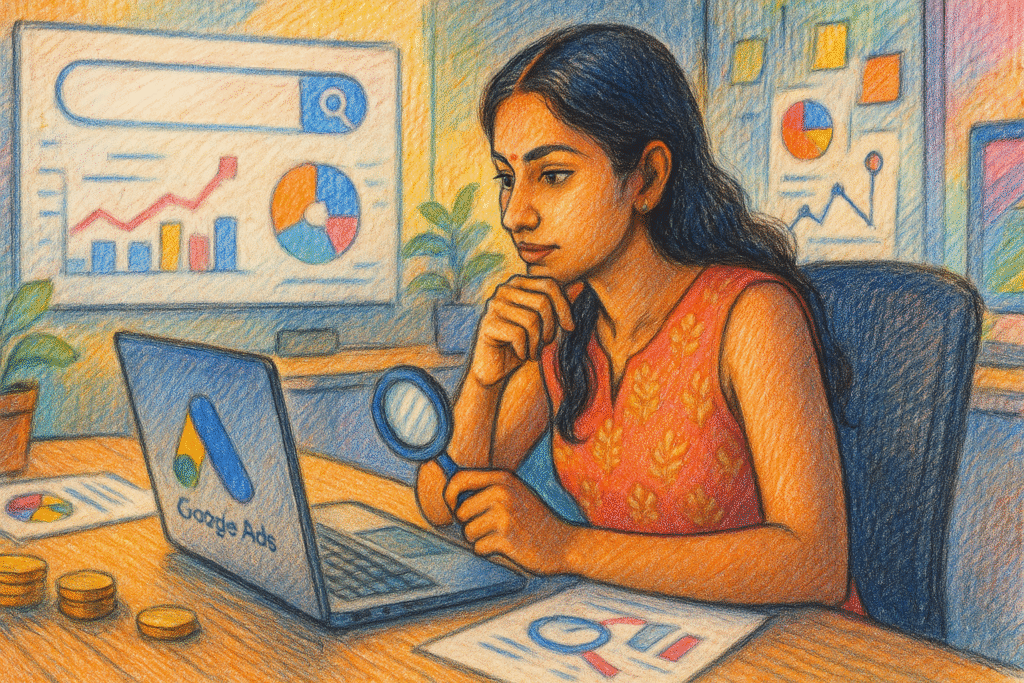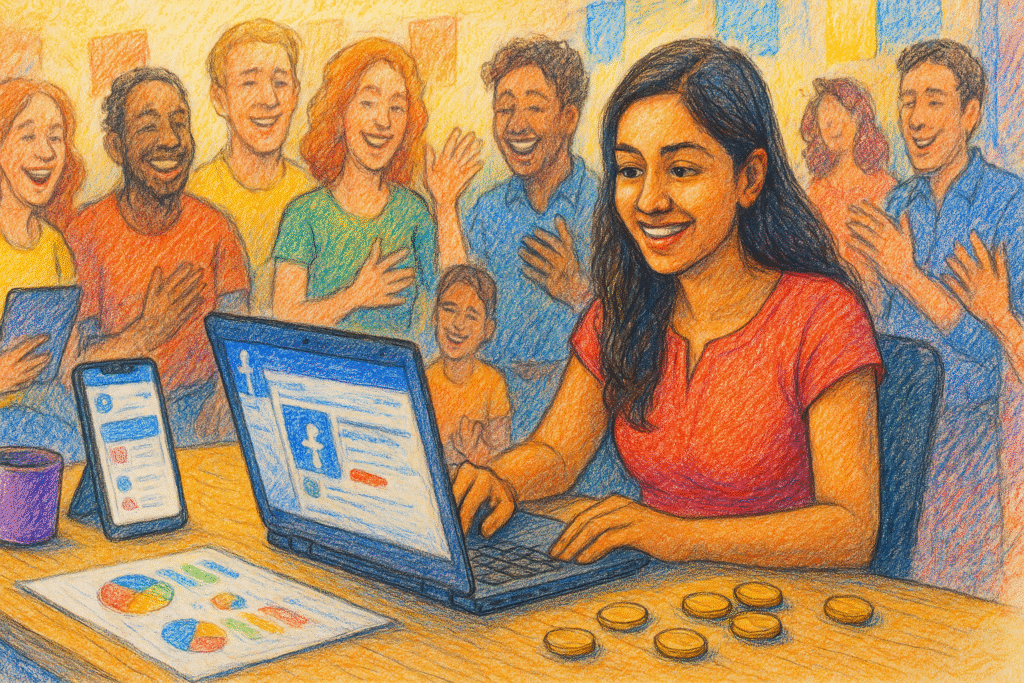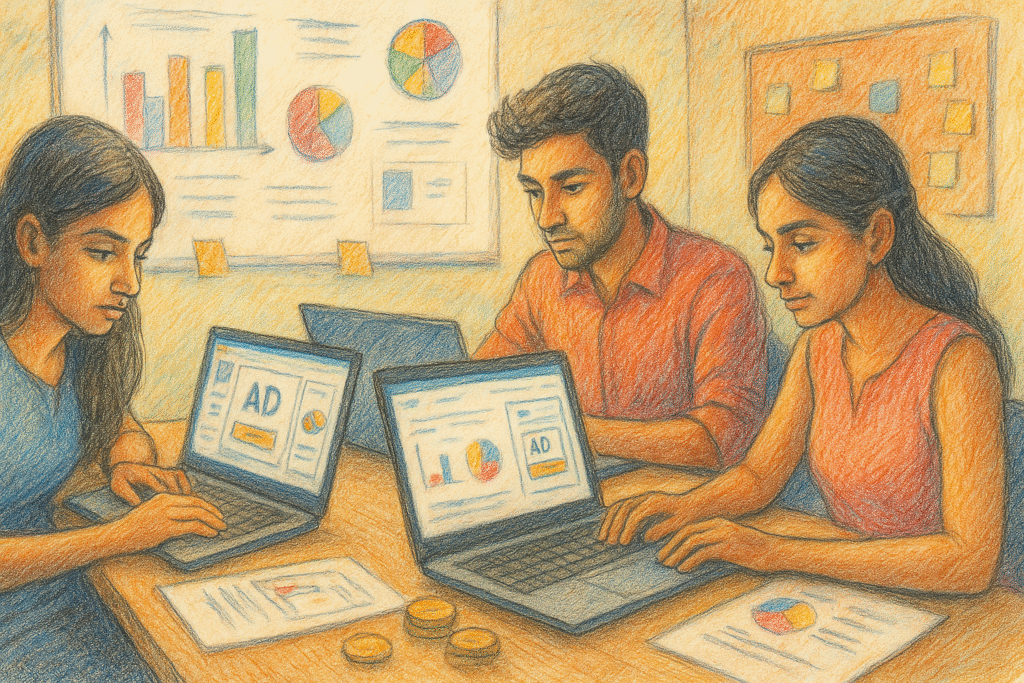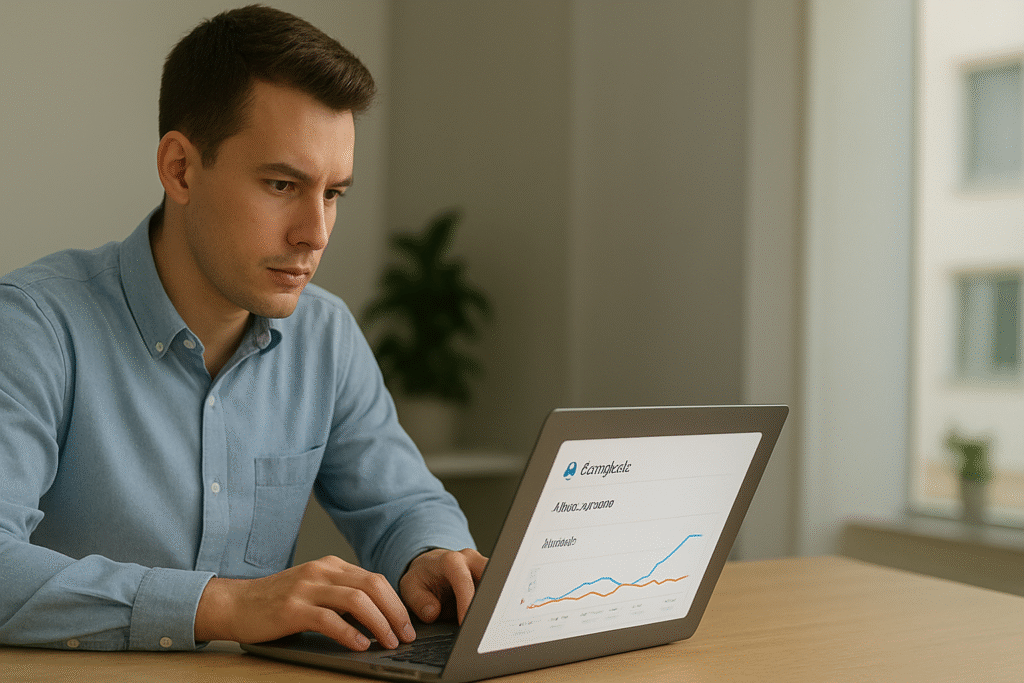Imagine this. You’re sitting in the college library (pretending to study, but actually scrolling on your phone). Suddenly, you see an ad for sneakers you were Googling last night. Two minutes later, on Instagram, another ad pops up – this time showing the same sneakers on sale.
Welcome to the world of Google Ads and Facebook Ads. Different platforms, different styles, but one mission: making you buy.
Now the big question for you, the digital marketing student: Should you learn Google Ads first or Facebook Ads first? Let’s break this down like a canteen conversation, not a boring textbook.
Why Ads Matter in Digital Marketing
Social media posts and organic reach are fine, but let’s be honest – organic reach alone is like expecting to pass exams by just attending half the classes. Not impossible, but tough.
Paid ads = shortcut + strategy.
Businesses invest billions in ads every year.
Students with ad skills are in high demand.
Ads = measurable ROI (you know where every rupee went).
So, learning ads is not optional – it’s your career booster.
Google Ads: The “Answer to Intent”
Think of Google Ads like the library topper. Serious, focused, and ready with answers.
How it Works
People search → Google shows ads → You click if relevant.
Example: You search “best digital marketing courses near me” → Ads for institutes pop up.
Why Google Ads Rock
Intent-driven: People are already looking to buy or learn.
Massive reach: Google controls 90%+ of the search market.
Different ad types: Search ads, display ads, YouTube ads, shopping ads.
Example
Riya searches “buy affordable earphones.” A brand’s ad appears. She clicks and buys. Google Ads worked because Riya had intent.
Best for: Students who want to learn lead generation, performance marketing, and keyword strategy.

Facebook Ads: The “Party Host”
If Google Ads is the topper, Facebook Ads is the cool extrovert throwing a campus fest. It doesn’t wait for you to search. It shows you what you might like.
How it Works
You’re scrolling Facebook/Instagram → Ad pops up → You stop, engage, maybe buy.
Example: You weren’t looking for a backpack, but an Instagram ad shows one that looks perfect for college.
Why Facebook Ads Rock
Detailed targeting: Age, interests, behavior, even “students who like coffee + anime.”
Visual storytelling: Reels, carousels, videos.
Affordable: You can start with just ₹200 a day.
Example
A café near your college runs an Instagram ad: “50% off for students.” You weren’t planning to eat out, but suddenly you’re there with your friends.
Best for: Students who want to learn branding, audience targeting, and creative ad design.

Google Ads vs. Facebook Ads: The Key Differences
| Factor | Google Ads | Facebook Ads |
|---|---|---|
| Audience | People searching with intent | People scrolling casually |
| Goal | Lead generation, direct sales | Brand awareness, engagement, impulse buys |
| Ad Format | Text-based + display + video | Visual-heavy (images, reels, carousels) |
| Cost | Higher CPC (but high intent) | Cheaper CPC (but lower buying intent) |
| Learning Focus | Keywords, bidding, analytics | Audience targeting, creatives, storytelling |
So, What Should Students Learn First?
Here’s the honest truth: both are important, but your choice depends on your career goals.
If you see yourself working in performance marketing, e-commerce, or search campaigns, start with Google Ads.
If you love creative content, social media, and brand marketing, start with Facebook Ads.
If you want to be a complete digital marketer, you’ll eventually need both.
My suggestion for students: Start with Facebook Ads (simpler, more visual, easier to practice), then move to Google Ads for advanced skills.
How Students Can Practice Ads (Without Burning Money)
Facebook Ads Manager Demo → Set up campaigns with small budgets. Even ₹500 can teach you targeting basics.
Google Ads Skillshop → Free official Google certification. Learn campaigns step by step.
Simulated projects → Try running ads for your college fest, a friend’s startup, or even a fake campaign.
Track results → Click-through rates, conversions, engagement. Learn to read numbers, not just likes.

A Mini Case Study
Arjun (MBA student): Learned Google Ads. Ran a campaign for a coaching center. Helped them get 150 leads in a month. Landed a job as a PPC analyst.
Priya (BBA student): Started with Facebook Ads. Promoted her handmade jewelry on Instagram. Within 6 months, she made enough money to cover her semester fees.
Lesson? Different platforms, same destination: career growth.
Pro Tips for Students
Don’t chase only certifications. Practical campaigns matter more.
Start small. Even ₹200 a day is enough to learn.
Follow the numbers. Ads are math + psychology, not just pretty pictures.
Stay updated. Platforms change daily. Today it’s reels, tomorrow it’ll be something else.
Think like a customer. Ask: “Would I click this ad?”
Final Thoughts
Google Ads vs. Facebook Ads is not Coke vs. Pepsi. It’s like asking: “Should I learn Excel or PowerPoint first?” Both are useful, both are powerful, and eventually – you’ll need both.
But as a student, if you’re just starting out, my advice is simple:
-
Begin with Facebook Ads for practice and creativity.
-
Graduate to Google Ads for strategy and analytics.
That way, you’ll have the best of both worlds: the creativity of a marketer and the precision of a strategist.
So, the next time you see an ad on your feed, don’t just scroll past. Ask yourself: “Why did this ad target me? How did they design it? Would I click?” That’s how you go from being a consumer to becoming a digital marketing pro.
Pro Tip from experience: Platforms may change (hello, TikTok ads, LinkedIn ads), but the skill of understanding people and targeting them smartly never goes out of fashion. Master that, and you’ll always stay ahead.

